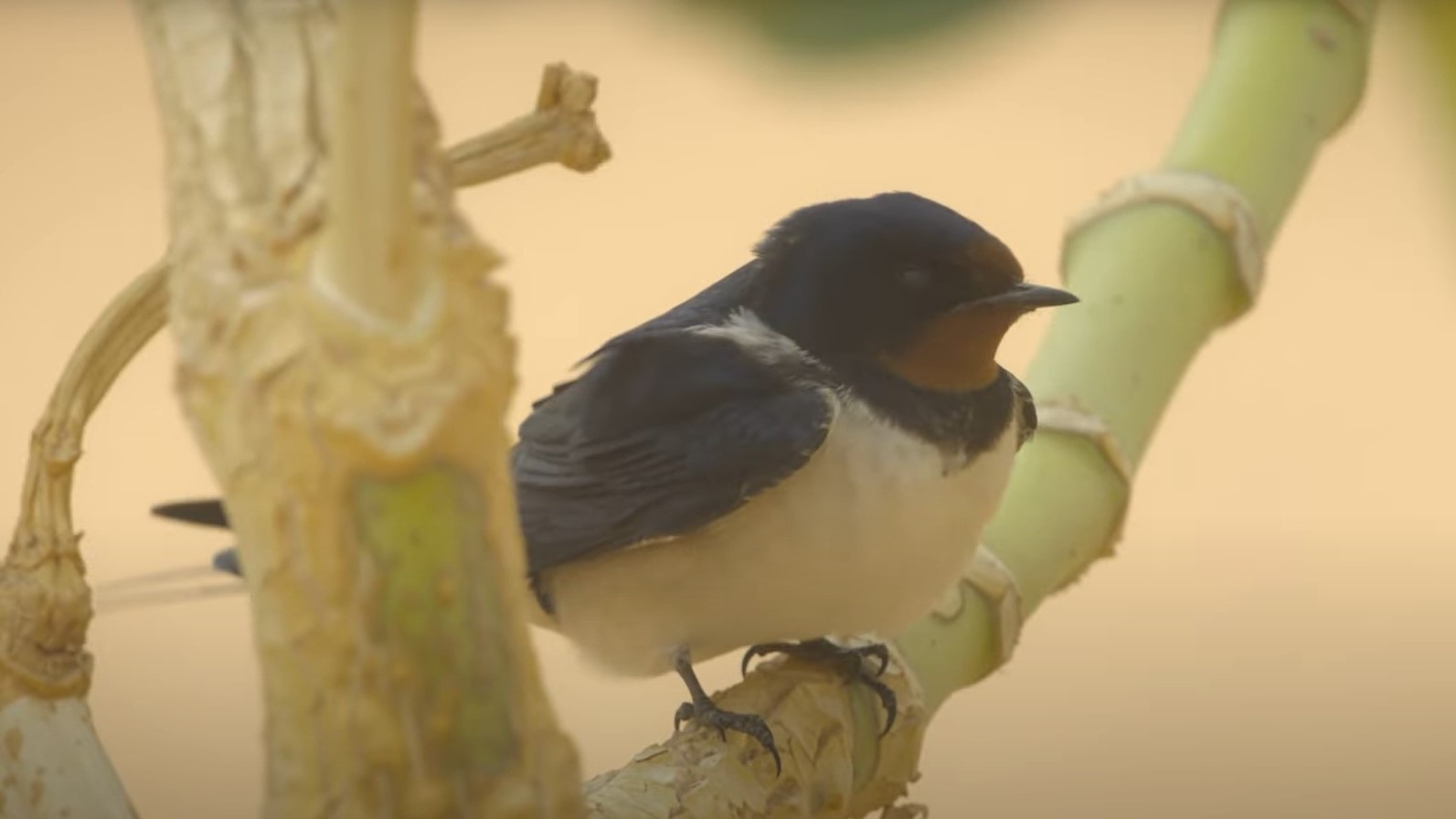Stunning footage captures tiny bird's fight for survival in massive Saharan sandstorm
First of its kind footage captured for National Geographic's "Incredible Animal Journeys" shows a barn swallow caught in a sandstorm as part of its migration through the Sahara Desert.
Incredible, first-of-its-kind footage reveals a tiny swallow's battle for survival inside a mammoth sandstorm as it migrates across the Sahara Desert. The bird, which weighed less than an ounce (28 grams), was recorded while undertaking the most difficult part of its epic journey north for the summer.
Every year, European barn swallows (Hirundo rustica rustica) migrate 6,000 miles (9,700 kilometers) from northern Europe to southern Africa, and then back again. The new clip, captured for National Geographic's "Incredible Animal Journeys," shows a solitary barn swallow on the perilous stage across the desert.
"Swallows are amongst nature's 'Top Guns' — fast and acrobatic, able to turn on a dime with a flick of their long tail feathers — so finding a bird the size of your hand in a desert almost the size of the U.S. was always going to be a challenge," Sarah Gibbs, executive producer on the series, which premiered Nov. 19, told Live Science in an email. "Filming that bird in a sandstorm, on a long lens, buffeted by high winds, took it to the next level."

The production team spotted the swallow in Morocco on the northern edge of the Sahara. This is the point where the swallows are finishing their journey across the desert, having spent days in searing-hot temperatures with no water. A scientist who studies the migration each year, along with an avid birder and long-lens camera operator assisted the team.
Related: Upcoming solar maximum could scramble migrating birds' internal compass, new study shows
"The storm was an unexpected bonus — but it made filming even tougher," Gibbs said.
Barn swallows weigh between 0.6 and 0.7 ounce (17 to 20 grams) and are around 6 inches (15 centimeters) long. As the sandstorm hit, winds picked up to around 40 mph (64 km/h). The production team "focused in on a swallow really struggling," she said. "A master of flight at the mercy of the elements, tossed around like a boat at sea. It was a blink and you'll miss it moment as the bird sought refuge in a bush, waiting for the storm to pass."
Get the world’s most fascinating discoveries delivered straight to your inbox.
European barn swallows migrate north in the spring to mate and rear chicks, then head south as temperatures begin to fall ahead of winter. The migration is perilous, with high mortality rates recorded each year. The Sahara is one of the deadliest points of the trip. "It takes five days to cross and a swallow can only go a few days without drinking," Gibbs said.
After making it through the desert, the barn swallow was filmed reaching a water source and drinking for the first time in days. From there, the bird still had to fly another 2,000 miles (3,200 km) to reunite with its mate — before starting the cycle again.

Hannah Osborne is the planet Earth and animals editor at Live Science. Prior to Live Science, she worked for several years at Newsweek as the science editor. Before this she was science editor at International Business Times U.K. Hannah holds a master's in journalism from Goldsmith's, University of London.


